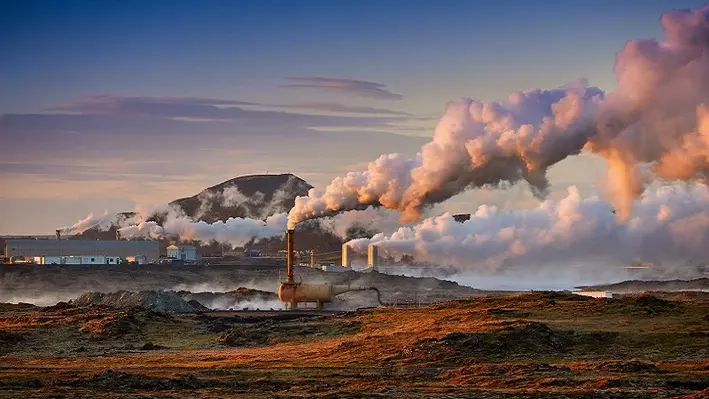

Saipem, a global leader in the engineering and construction of major projects for the energy and infrastructure sectors, has signed a MoU with Geolog and Ignis H2 Energy to develop advanced technological solutions and conduct feasibility studies for new geothermal plants.
The two companies are specialised in the geothermal sector; Geolog is a leader in the evaluation of geological formation and drilling solutions, while Ignis H2 Energy expertise lies in geothermal resource acquisition, exploration and development. Saipem has moved to utilise the experience of both companies as it aims to develop advanced solutions that can enable a greater use of geothermal energy. In particular, the company is interested in next-generation geothermal energy systems, offshore geothermal energy, and the conversion of oil & gas wells.
As per the MoU, the three entities have agreed to carry out joint studies on unconventional geothermal energy such as terrestrial heat sources difficult to access as well as on offshore geothermal energy.
Saipem will lead the feasibility study of geothermal plants, by assessing the technical solutions currently available in the market and identifying potential technological gaps. Geolog and Ignis will contribute to the assessment of geological formations and drilling solutions, as well as the analysis of geothermal resources availability.
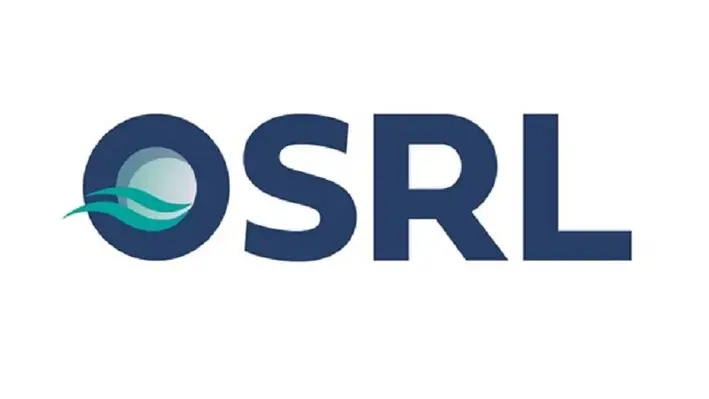

Oil Spill Response Ltd (OSRL), the largest international industry-funded cooperative dedicated to supporting its members in preparing for and responding to oil spills, has marked another step in its rebranding efforts through the reveal of its newly designed logo.
Encapsulating OSRL’s core values of safety, collaboration and innovation while reflecting its commitment to future aspirations, the new logo is part of the company’s wider rebrand which also includes a refreshed mission and vision.
“We wanted a brand that not only reflects our 40 years of leadership but also positions OSRL for the future,” remarked Darren Waterman, Engagement Director. “The new identity stands as a symbol of our unwavering commitment to safety, innovation, and collaboration.”
The new logo, which was conceived through an extensive brand review, will be gradually rolled out across all company touchpoints, including its website, social media channels, training materials, and operational equipment.
“We are proud to introduce a brand that honours our rich legacy while looking toward the future,” commented Vania De Stefani, CEO. “This new logo is not just a visual change; it’s a reflection of OSRL’s evolution and our ongoing dedication to our members and the industry.”
The brand rollout will continue throughout 2025 to ensure a sustainable approach minimising waste.
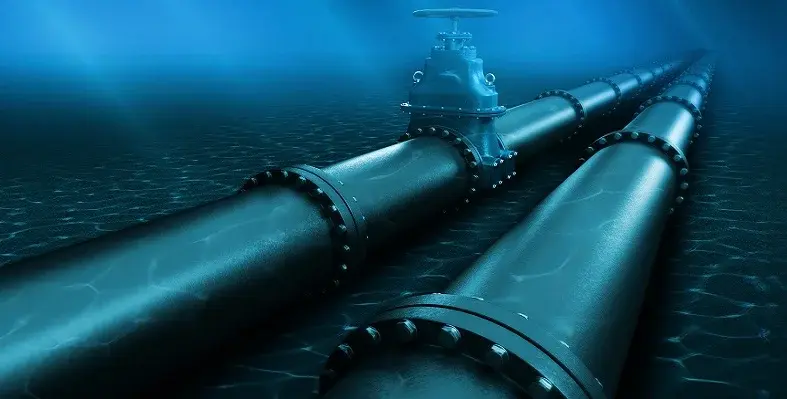

The Bureau of Safety and Environmental Enforcement (BSEE) has awarded a contract and first task order for the decommissioning of eight orphaned pipelines in the Matagorda Island lease area.
This move comes as part of the Biden-Harris Administration’s concerted efforts to address legacy population and will see work take place in the area which is located around 12 miles off of the Texas coast.
On 4 September, BSEE awarded a five-year indefinite delivery/indefinite quantity contract to Chet Morrison Contractors, LLC, to conduct on-site pipeline decommissioning activities. This was closely followed, on 12 September, by the award of the first task order under the contract, for the Matagorda Island Areas.
“With this award, BSEE advances to the active pipeline decommissioning phase of the Matagorda Island area project,” remarked Kathryn Kovacs, Interior Deputy Assistant Secretary for Land and Minerals Management, who leads BSEE. “The funding provided by the Bipartisan Infrastructure Law is crucial to BSEE as we tackle orphaned infrastructure on the Outer Continental Shelf, which presents a serious hazard to safety and the environment.”
The project will reduce pollution risks and improve offshore safety by decommissioning infrastructure that could interfere with navigation, commercial fisheries, and other current or future ocean uses.
These awards the year are the latest in a series that has seen action take place in the Matagorda Island lease area. Last year, BSEE awarded contracts for the decommissioning of nine orphaned wells there in a bid to address the urgent decommissioning needs. This included securing wellheads, decommissioning pipelines with hazardous materials, and preparing the site for permanently sealing the wells.
This has been part of the Bipartisan Infrastructure Law which allocated US$250mn to clean up well sites in national parks, national forests, national wildlife refuges, and other public lands and waters. Nearly US$150mn has been disbursed over the past three years.
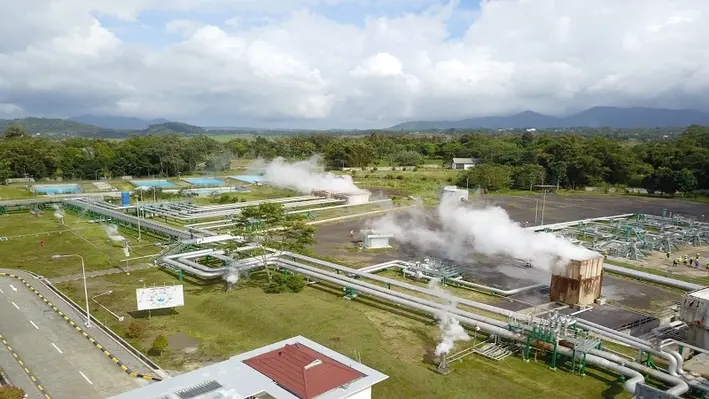
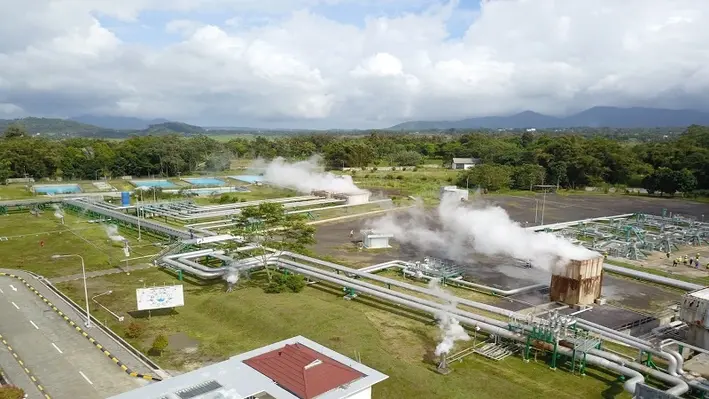
PT Pertamina Power Indonesia (Pertamina NRE), PT Pertamina Geothermal Energy Tbk (PGE) and France-based clean hydrogen technology venture Genvia have signed a MoU to collaboratively develop green hydrogen production through the integration of advanced solid oxide electrolyser (SOEL) technology with geothermal heat resources.
The agreement includes the technical and economic study of the use of Genvia’s advanced high-temperature SOEL technology to reduce energy consumption in green hydrogen, and will be conducted at one of PGE’s geothermal sites.
The collaboration will leverage PGE’s geothermal expertise and Pertamina NRE’s broader clean energy portfolio, including renewables, green hydrogen, battery storage, electric vehicles and carbon businesses.
John Anis, CEO of Pertamina NRE, said, “We at Pertamina NRE are very enthusiastic about the collaboration with Genvia, which we believe will significantly accelerate the development of green hydrogen in Indonesia. This collaboration underlines our commitment to explore innovative solutions to achieve more cost-effective hydrogen production and maximise Indonesia’s green energy potential, such as geothermal.”
Florence Lambert, CEO of Genvia, commented, “Through our collaboration with Pertamina NRE and PGE, we see great potential in combining Genvia’s advanced technology with Indonesia’s abundant geothermal resources to drive a sustainable energy future. By exploring the potential of high-temperature SOEL technology, we aim to unlock new efficiencies in green hydrogen production.”
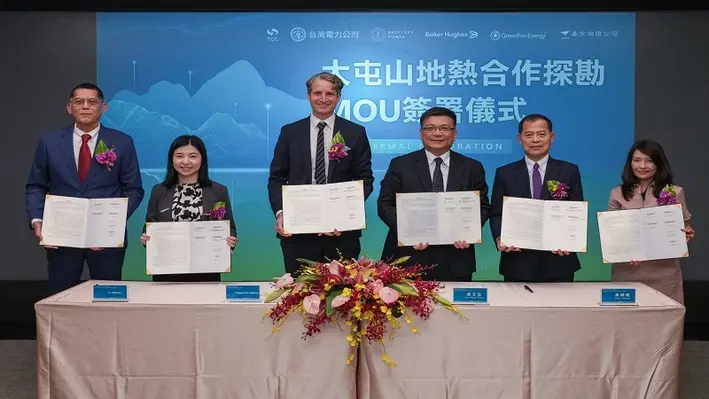

Baseload Power Taiwan has announced a partnership with Taiwan Power Company (Taipower), Taiwan Cogeneration Corporation (TCC), and other international partners to develop geothermal energy in the Tatun Mountain area of northern Taiwan.
The collaborative partnership will unlock the country’s largest geothermal energy reserve in order to rapidly advance geothermal development at scale. By harnessing this energy, it is believed that geothermal power will become a key pillar in Taiwan’s journey towards hitting its Net Zero goal by 2050.
On 1 October, 2024, Taipower held a signing ceremony for the ‘MOU for Cooperation – Geothermal Development at Tatun Mountain’ with joint signatures from Taipower Chairman Wen-sheng Tseng, TTC Chairman Shun-I Huang, Baseload Capital Chairman Magnus Brandberg, and representatives from GreenFire Energy and other international geothermal companies.
Magnus Brandberg, Co-Founder and Chairman of Baseload Capital, said, “As Taiwan’s first international geothermal developer, we are committed to delivering 24/7 clean energy and advancing the geothermal industry. By leveraging public-private collaboration, we aim to unlock Taiwan’s geothermal potential, contribute to its energy independence, and support the 2050 Net-Zero goal.”
Following the signing, a series of initiatives will take place including the analysis of existing geological data; geology, geochemistry and geophysics exploration; establishment of conceptual modules; determining drilling targets; and the execution of an exploration drilling programme.
Once the exploration phase is complete, assessments will begin for the potential of geothermal power plants and the possible implementation of Advanced Geothermal Systems.
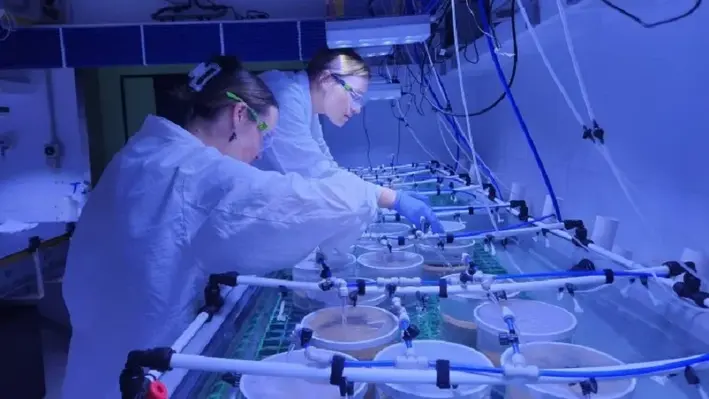

The Australian Institute of Marine Science (AIMS) and Australia’s Nuclear Science and Technology Organisation (ANSTO) have begun an investigation to explore the risk of radioactive materials accumulating in marine organisms following the decommissioning of offshore oil and gas infrastructure.
“The experiment will help operators and regulators understand the environmental risk of infrastructure like pipelines with residual levels of NORM (Naturally Occurring Radioactive Material), helping to guide decision-making around whether this infrastructure should be removed or safely left in the ocean,” said AIMS Researcher and experiment lead, Darren Koppel.
According to AIMS, naturally occurring radioactive elements in soils, rocks, the seabed can be accumulated in infrastructure like pipelines. The resultant accumulated NORM that can build up may be present in structures and, if left in the ocean following decommissioning, may eventually leach into seawater before being released into sediments on the ocean floor. This could have an impact on marine organisms.
Currently, there is little data available which describes at what levels NORM from the industry becomes dangerous to marine organisms, a problem the experiment is looking to remedy.
Using facilities in the National Sea Simulator at AIMS’ Townsville headquarters, scientists have dosed marine sediments collected at the AIMS jetty and beach with specific amounts of NORM, and then placed the organisms in the sediments to determine concentrations above which the organisms may start experiencing harm.
The team also extracted eDNA from the sediments to understand and characterise the bacteria biodiversity, and to see whether the radioactivity brought about a change in the bacterial community over the course of the four-week experiment.
“The default position in Australia is that all offshore oil and gas infrastructure must be removed from the ocean when it is no longer being used,” remarked Koppel. “But leaving infrastructure in-situ may be allowed if the oil and gas operator can demonstrate this will result in an equal or better environmental outcome than removing it, that any environmental risks and impacts will be acceptable, and leaving it will comply with Australia’s obligations under international conventions.”
AIMS scientists are also investigating other aspects of the decommissioning question, including the habitat value of offshore structures and whether they can help maintain populations of marine species (including invasive ones and those important for Australian fisheries) by aiding dispersal processes.
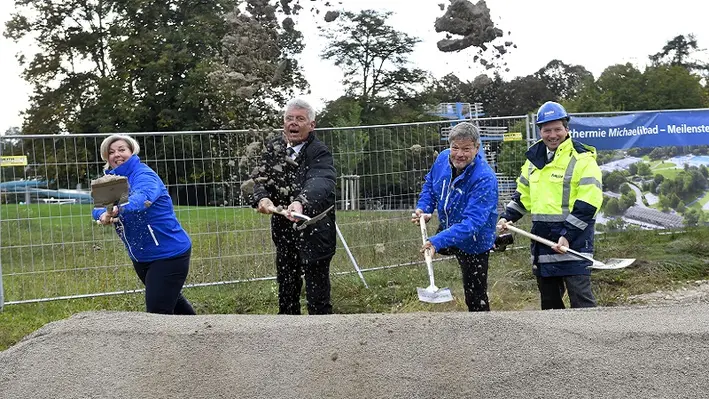

Stadtwerke München (SWM), one of the largest municipal companies in Germany, has announced that the construction for a new geothermal plant in Germany is now underway.
Already operating six geothermal plants in and around Munich, the new project will be built on the site of the Michaelibad in southeast Munich and is expected to be completed in 2033. It is being undertaken as part of SWM’s efforts to cover Munich’s district heading needs in a climate-neutral way by 2040 at the latest.
Projected to supply heat to around 75,000 Munich residents, the plant will have four extraction and four reinjection boreholes, an adjacent heating station and a large heat pump to further increase the heat yield.
So far, demolition work has been carried out on buildings where the heating station will be located and preparations have also been made for the integration of the future geothermal plant into the district heating network. Now, attention turns to construction, a milestone marked by a groundbreaking ceremony held at the site.
“Geothermal energy is a climate-neutral, inexhaustible and at the same time reliable source of energy that is available all year round,” commented Robert Habeck, Federal Minister for Economic Affairs and Climate Protection. “It can also be used to cover a persistently high demand for heat. The Munich municipal utilities are a good example of how this technology can be successful in densely populated cities. The development of geothermal heat has the potential to cover around a quarter of Germany's required renewable heat demand by 2045. The aim is to increase the current geothermal energy feed into heating networks tenfold. The SWM is actively contributing to achieving this goal.”
Karin Thelen, SWM Managing Director of Regional Energy Transition, added, “In order to generate district heating in an even more climate-friendly way, we are consistently expanding the use of geothermal energy as part of our transformation plan. 20 years after our first geothermal plant at the Riem trade fair, we are building our seventh plant here at the Michaelibad.
“We are planning another on the site of the former Virginia depot in the north of Munich, and additional locations are currently being explored with the city administration. In total, we want to build ten geothermal projects with more than 50 new deep boreholes in and around Munich. In addition, we are making our existing plants more efficient through additional drilling. Large heat pumps directly at the location of the geothermal plant, as here at the Michaelibad, should also make the heat from the return flow usable for district heating. However, without federal funding for efficient heating networks, the feat of municipal heat transition cannot be managed. We are receiving funding for the plant at the Michaelibad, for which I would like to express my sincere thanks.”


Well-Safe Solutions, a global energy transition specialist, has appointed a new Country Manager for the Malaysian market in a bid to develop its Asia Pacific presence.
Adrin Shafil, who currents heads up the business in Kuala Lumpur, is the individual given this task and is seeking to leverage his operator, well management and drilling contractor experience in order to fulfil it.
“I’m really excited to be joining Well-Safe Solutions at this key moment in its global growth journey,” he remarked. “I’ve kept up to date with the company’s recent developments, with Well-Safe Solutions Pty continuing to grow at pace in Australia and throughout South-east Asia.
“I’m looking forward to bringing my well plug and abandonment and engineering experience to bear as we continue to service the well abandonment, personnel and project delivery requirements of clients throughout Malaysia, Australia and beyond.”
Shafil will report to Massimo Delia, General Manager – Asia-Pacific, who commented, “Adrin is an ideal fit for our current business, as well as our long-term aspirations to continue growth in the APAC region. His considerable engineering experience and client management skills will bring immediate benefit to our operations – not just in Malaysia, but throughout southeast Asia.”
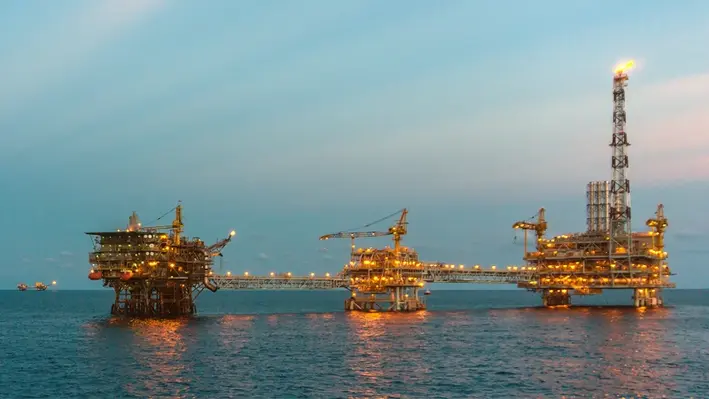

Reservoir Link Energy Bhd. (RLEB), an energy related services provider, has announced that its subsidiary, Reservoir Link Sdn. Bhd. (RLSB), received a letter of award from Hibiscus Oil & Gas Malaysia Limited (HML) for the provision of well leak diagnostic and remedial services.
As per the three-year contract (which has an optional one-year extension), RLSB will supply competent personnel, all consumables, operate associated equipment to perform the sealant treatment activities and execute well integrity remediation activities related to pressure and time activated sealant services (independent equipment and without utilisation of slickline, e-line or coiled tubing unit). This will be for any of HML’s pressure and time activated sealant operations.
This announcement was closely followed by an additional agreement confirmed by a 60% owned subsidiary of RLEB, Reservoir Link Solutions Sdn Bhd. (RLS).
This centred around a memorandum of understanding signed with Ad Terra Asia Sdn. Bhd. In order to mutually collaborate around specialised studies and work in relation to geological storage of carbon capture, utilisation and storage (CCUS) as well as subsurface, geology and geophysical studies in Malaysia.
Both parties have agreed to cooperate in relation to exploring potential business opportunities in the territory and to use reasonable efforts to explore and complete any contract mutually agreed upon. During the term of the MoU, the parties expressed a wise to explore the possibility of promoting, marketing, selling and distributing each other’s products and/or services within the territory for the duration of the agreement (expiring on 25 March 2025).
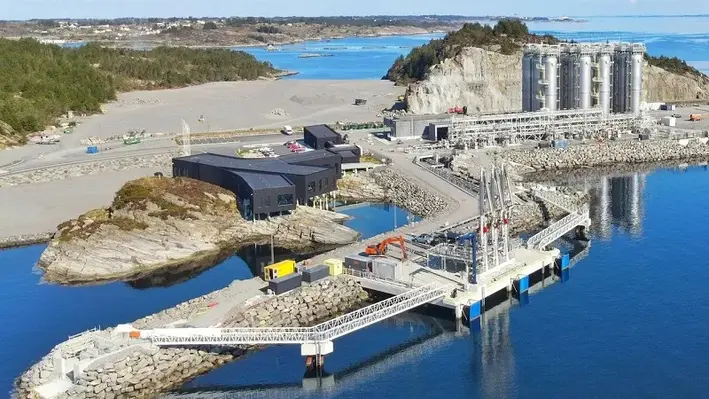

The Northern Lights cross-border carbon capture and storage facility at Øygarden in Norway has been declared completed and ready to receive CO2.
The official opening of the facility – a joint venture between Equinor, Shell and TotalEnergies – was confirmed in a visit by the Norwegian Minister of Energy. The facility is expected to provide a vital outlet for large and hard-to-abate industrial emitters that need to decarbonise their processes.
It is part of the Norwegian full-scale CCS project Longship. This includes the capture of CO2 from industrial sources and shipping of liquid CO2 to the terminal in Øygarden before transportation – via pipeline – to the offshore storage location below the seabed in the North Sea.
“The completion of the Northern Lights facility marks an important milestone for the global development of a business model for carbon capture, transport and storage. It opens a value chain for decarbonisation of European industry and energy and shows the role we and our partners take in developing low carbon solutions in the energy transition” remarked Equinor CEO Anders Opedal.
The first phase capacity of 1.5mn tons of CO2 per year is fully booked, and the joint venture owners continue to work on plans to increase the transport and storage capacity for the future.
“This project demonstrates what can be achieved when authorities and industry are working towards the same goal and co-invest to reduce risks,” added Opedal. “Equinor has several CO2 transport and storage developments in our portfolio as operator and partner. The established Northern Lights value chain and experience from the project will be valuable in maturing and scaling up future CCS projects.”
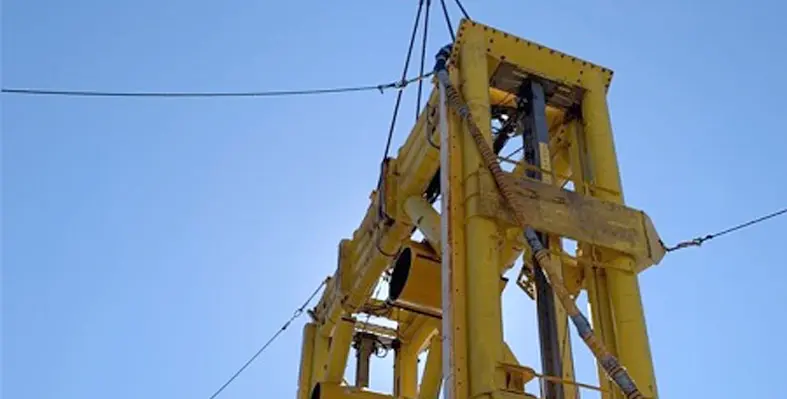
 Cutting Underwater Technologies has announced the successful completion of all required cuts for a key client as part of a large decommissioning project offshore Western Australia.
Cutting Underwater Technologies has announced the successful completion of all required cuts for a key client as part of a large decommissioning project offshore Western Australia.
The company's proprietary 315” cutting machine, which it claims is the largest of its kind, was used to deliver the project. Four cuts of as much as 6-m diameter performed by a diamond wire cutting machine were executed with precision.
In 2024, CUT has completed 32 projects across six continents. The company's full suite of cutting solutions covers a wide range, from chain cutters and pipe/conductor/riser cutting machines to the largest machines for mid-water arches, disconnectable single-point moorings, and most recently, riser turret mooring structures.
CUT have exclusive use of a patent for castellated/step cuts, which have been recommended by the Government of Western Australia (Department of Energy) to minimise risk in decommissioning offshore platforms. The completion of a step cut mitigates against any danger of structural members such as platform legs sliding or having horizontal movement relative to the bottom part once cut. A step cut would provide structural stability, even with the top part of the platform resting on the bottom part. Cuts can be done remotely, in air, or subsea, removing the risk of having personnel in the cutting vicinity.
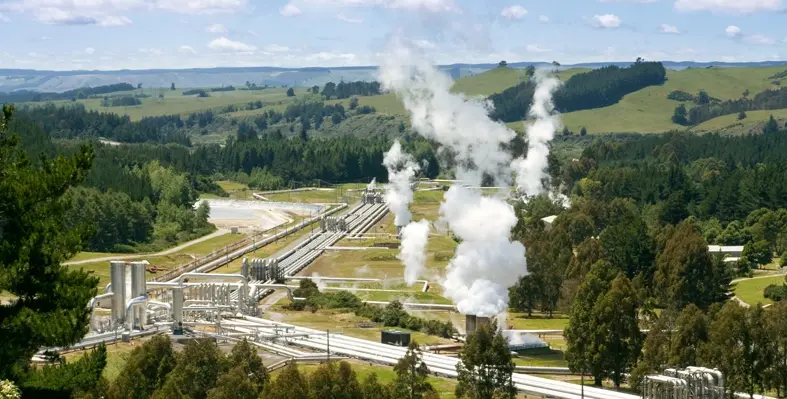
 European Commission-endorsed body, European Technology & Innovation Platform on Geothermal (ETIP-Geothermal), has launched the new vision for geothermal 2030/50, 'Geothermal Horizons: from Cities to Regions'.
European Commission-endorsed body, European Technology & Innovation Platform on Geothermal (ETIP-Geothermal), has launched the new vision for geothermal 2030/50, 'Geothermal Horizons: from Cities to Regions'.
Designed in lines with the EU climate-neutral milestone by 2050, this vision aims to address the climate transition and secure Europe’s energy supply in an affordable way. Its research agenda targets the development of novel geothermal applications tailored to meet the diverse energy needs of European citizens and industries. A crucial step is the integration of these applications into the European energy security scheme, particularly in regions vulnerable to external energy dependencies.
“This ETIP Geothermal Vision looks towards the future of geothermal energy development to achieve the European Union’s climate-neutral milestone by 2050, and it highlights the great benefits of geothermal to decarbonise our economy. It is a unique solution to allow a sustainable energy transition with a paradigm shift for a circular economy. Geothermal is a key enabler for energy system integration, bringing renewable resources to the power, and heating and cooling industries in addition to energy storage and critical raw materials supply,” said Luca Xodo, ETIP Geothermal Chair.
Page 43 of 111